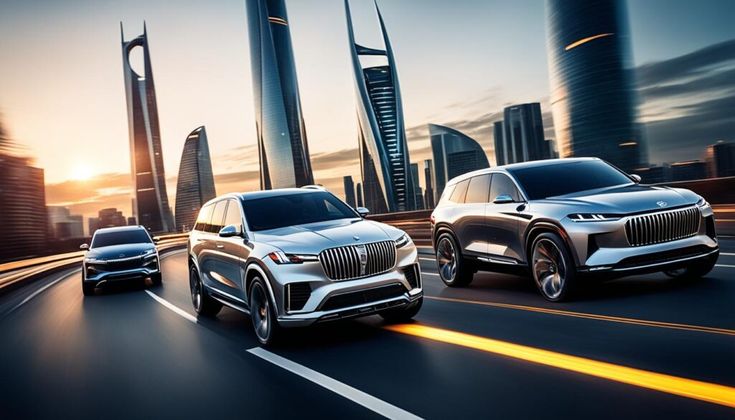We need more public chargers to support EV growth, but it remains difficult to make money on public charging.
Malaysia has long lagged other regions in EV adoption but now the rapid growth is finally here. EVs represented about 1% of all new passenger cars sold in Malaysia in 2023. By 2030, this figure could rise to 50%.
Malaysia needs 100,000 charging ports by 2030 to meet the increasing charging demand. Private chargers are expected to grow from 2,500 to 90,000, constituting 90% of the total.
There are two types of public chargers: DC charger, utilized primarily on highways and for quick recharges, and slower AC charger, available at places like supermarkets, shopping malls, car dealerships, golf courses, and banks, where vehicles are parked for longer hours. AC chargers may also be found near sidewalks or street parking. Presently, Malaysia has about 2,500 AC and DC chargers, but this number is projected to increase to 100,000 by 2030.
While public fast charging is integral to the overall charging solution, current demand for electricity from EVs remains relatively low, posing profitability challenges in the short to medium term. It is essential regardless of current circumstances. Presently, most EV owners are homeowners with access to home chargers and often have a second vehicle for long-distance travel. Nevertheless, these individuals may still require public charging, for example, when forgetting to charge overnight or encountering faulty AC chargers at workplace parking garages. Moreover, long journeys exceeding 250 km requires public charging.
As EV adoption expands and ownership demographics diversify away from primarily higher income brackets, the percentage of charging occurring at home is anticipated to decrease to 50% by 2030. While approximately 65% of the Malaysian population reside in single-family homes, many lack garages suitable for installing chargers, or face limiting power supply. Condominium residents encounter challenges such as lack of suitable installation sites or resistance from management offices or committees on charger installations. In these scenarios, regardless of speed, public charging becomes crucial.
Recognizing the growing need for public chargers, numerous new players are entering the sector. Major energy companies and automakers, for instance, are collaborating to invest at least RM 50 million in a joint venture aimed at constructing stations featuring approximately 5,000 fast chargers in both urban and rural areas of Malaysia.
There are 2 predominant business models in public charging:
1. Owner-operator model: Operators assume responsibility for all capital costs, including hardware and installation, as well as ongoing operations and maintenance. Revenue is mainly derived from electricity sales, though other avenues such as incentives and energy credits exist.
2. Solution providers model: Operators sell chargers to site hosts, like supermarkets or dealerships, who bear hardware and installation costs. Site hosts also pay ongoing fees for operations and maintenance.
Based on our internal estimate, 80% of EV chargers in Malaysia have no regular usage. Fast charging stations incur high upfront cost regardless of the model chosen – 180kW DC charger and installation work can cost up to RM 400,000. Furthermore, grid upgrades may further incur millions in costs, depending on the number of chargers installed at a location.
Financial projections of the owner-operator model in Malaysia revealed challenging prospects. Assuming a daily charging time of 50 minutes, equivalent to 3 charging sessions of 50kWh each, the charger would generate annual revenue of RM 82,000 at a price of RM 1.50 per kWh dispensed. On the cost side, annual expenses for electricity, maintenance, insurance, settlement fee, depreciation and landlord profit sharing would amount to RM 73,000, posting a net profit of RM 9,000 and a 3% return on investment.
In contrast, with government incentives, the financial outlook is more favorable due to significant cost reductions. For example, recent legislation includes tax incentives that could reduce capital expenditure by 24%, increasing return on investment by 2%.
Achieving profitability for DC chargers requires leveraging on several levers across utilization rates, electricity costs, pricing strategies, demand charges, hardware longevity, and supplementary revenue streams. For instance, in the above example, the owner-operator would increase return on investment from 3% to 21% if they could increase sessions per day from 3 to 5, achieve advertising revenue of RM 12,000 per year, and a charging price hike from RM 1.5/kWh to RM 1.6/kWh.
However, realizing these enhancements in utilization and pricing won’t be straightforward. Based on our internal estimate, the nationwide average utilization rate is 1%, with peak monthly averages around 3% — both lower than the 5% assumed in our hypothetical example. Achieving a 10% utilization rate would necessitate a significant surge in demand, which appears feasible in the coming years as EV numbers grow and charge-point operators prioritize infrastructure based on utilization rates rather than mere market expansion.
Diversifying revenue streams, such as through advertising, could further bolster the financial performance of DC chargers. For instance, petrol stations derive 35% of their revenue from associated convenience stores, reflecting potential opportunities for DC chargers to be located in diverse locations. A hypothetical DC charger generating RM 12,000 in ancillary revenue streams annually could increase their return on investment by 4%.
EV sales have gained substantial traction in Malaysia and continue to rise, necessitating the construction of more public fast-charging stations. This expansion requires meticulous planning to maximize utilization through strategic location selection and dynamic pricing strategies, such as peak-hour rate adjustments. While subsidies remain crucial for short-term profitability, long-term success for public charging station operators hinges on employing diverse improvement strategies, including expansion into retail offerings, with support from OEMs, government entities, real estate developers, and other stakeholders. This collaborative effort aims to establish a sustainable and profitable public charging network across Malaysia that supports the ongoing growth of EV adoption.


